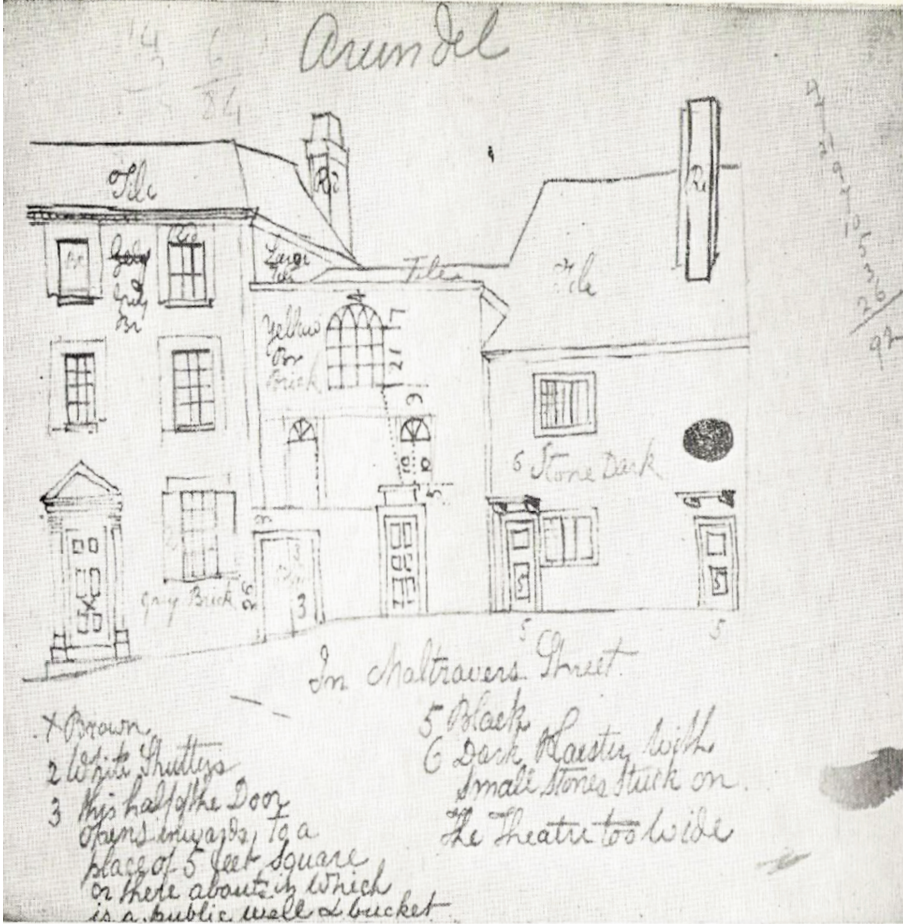Vol. 77, No. 3
pp. 125-202, 2023
Articles
-
"And let's ramble": Fantastic street Scenography in the Rover
Kate Aughterson
In Aphra Behn’s 1677 play The Rover two young women open the action in a scene which concludes a debate on the inequities of women’s lives with Hellena’s liberatory statement:
[… let us] be as mad as the rest, and take all innocent freedoms. Sister, you’ll go too, will you not? Come prithee be not sad. We’ll outwit twenty brothers if you’ll be ruled by me. Come put off this dull humour with your clothes, and assume one as gay and as fantastic as the dress my cousin Valeria and I have provided, and let’s ramble. (The Rover, 1.1.173-8)
The conventional motifs and experiences of Carnival (masquerade, identity shifting, topsy-turvydom, cross-dressing, pleasure) are condensed in the summative verb calling on and initiating dramatic action (“and let”s ramble”). The ramble invokes a spatial, consequential (“and”), literary, urban and mobile sensibility which the play examines from the perspective of the female characters and discursively and dramatically as a gendered […]
-
Unexpected Georgian Theatre: The Case of Arundel, West Sussex
Colin Chambers
Countering an old prevailing notion that British theatre was in the doldrums between the end of the Restoration and late Victorian eras, recent historians of the Georgian period, such as Angie Sandhu, Gillian Russell, and David Francis in The Oxford Handbook of the Georgian Theatre, 1737-1832 (2014), have argued instead that the late eighteenth century and beginning of the nineteenth saw extraordinary growth in British theatre activity and in entertainments that involved public exhibition and display. This article aims to explore evidence for this proposition by focusing on what might at first sight seem an unlikely exemplar, the rural town of Arundel, lying between Brighton to the east and Chichester to the west just off the south coast of England in the South Downs. During the period under consideration, it had a relatively small population, numbering roughly 2,000, and might therefore have been considered an unusual place in which to build and run a theatre. Yet, for a span of a little more than 25 years that bridged the reigns of George III and George IV, Arundel boasted a theatre reputation said to rival for a moment those of its more prominent coastal neighbours. Whilst not being artistically innovative, Arundel’s Georgian theatre can be seen as emblematic of a thriving if intermittent Georgian theatre scene beyond the country’s main urban centres. This is an underresearched area in the theatre history of this period, and by offering an empirical case study at local level, the article aims to trace the social and economic contexts in which such theatre enterprises operated. […]
-
The Stratford Roundhouse: Stratford's Forgotten Theatre
Abigail Rokison-Woodall
In 1970, a small theatre, known as The Stratford Roundhouse, was established in the gardens behind the Royal Shakespeare Theatre (RST). Its name was a deliberate echo of the London Roundhouse, a large, experimental, unconventional fringe venue, opened by Arnold Wesker in 1966, where the RSC had undertaken a season of scaled down productions (Schiele). Between 1970 and 1972, actors and other theatre practitioners from across the Royal Shakespeare Company (RSC), inspired by the spirit of its London namesake, performed in a series of innovative, inventive pieces. Very little has been written about this project, which seems to have been erased from the RSC’s history. And yet, this venture, short-lived though it was, laid the foundations for studio theatre at the RSC, having a direct impact on the founding of The Other Place Theatre, which has been an important party of the company’s history as a space for experimentation, innovation and intimacy.
In his account of “The Historical Background” to The Other Place in Other Spaces: New Theatre and the RSC, Colin Chambers touches briefly upon what he describes as “a group formed around actors Martin Bax and Hugh KeaysByrne”, taking the name, “Chaff and Bran” who “converted a rotunda in the gardens behind the main theatre into an auditorium and called it the Little Roundhouse” (25). This brief paragraph, which is reproduced almost […]
BOOK REVIEWS
Liberal Lives and Activist Repertoires: Political Performance and Victorian Social Reform by Tracey C. Davis (review)
reviewed by Katherine Newey
* “And let’s ramble”: Fantastic street Scenography in the Rover, by Kate Aughterson
* Unexpected Georgian Theatre: The Case of Arundel, West Sussex, by Colin Chambers
* The Stratford Roundhouse: Stratford’s Forgotten Theatre, by Abigail Rokison-Woodall
